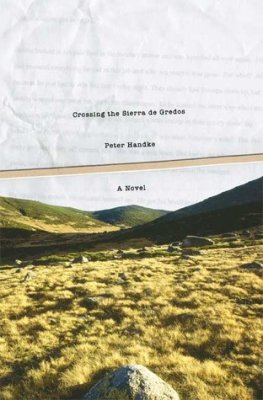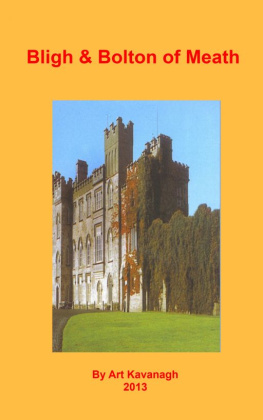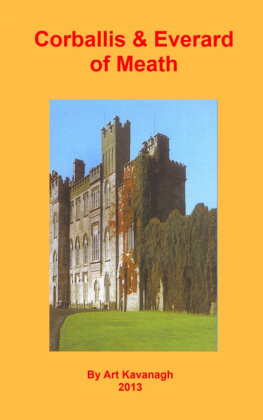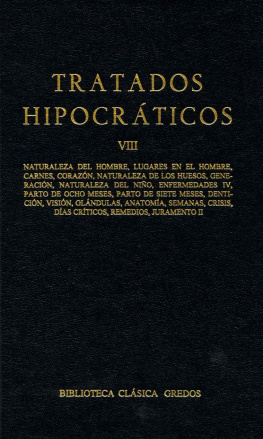Villagers of the Sierra de Gredos
Mediterranea Series
General Editor: Jackie Waldren: Lecturer at Oxford Brookes University; Research Associate CCCRW, Queen Elizabeth House, Oxford; and Field co-ordinator, Deya Archaeological Museum and Research Centre, Spain.
This is a new series which will feature ethnographic monographs and collected works on theoretical approaches to aspects of life and culture in the areas bordering the Mediterranean. Rather than presenting a unified concept of 'the Mediterranean', the aim of the series is to reveal the background and differences in the cultural constructions of social space and its part in patterning social relations among the peoples of this fascinating geographical area.
Villagers of the Sierra de Gredos
Transhumant Cattle-raisers in Central Spain
WilliamKavanagh
First published 1994 by Berg Publishers
Published 2020 by Routledge
2 Park Square, Milton Park, Abingdon, Oxon OX14 4RN
605 Third Avenue, New York, NY 10017
Routledge is an imprint of the Taylor & Francis Group, an informa business
Copyright William Kavanagh 1994
All rights reserved. No part of this book may be reprinted or reproduced or utilised in any form or by any electronic, mechanical, or other means, now known or hereafter invented, including photocopying and recording, or in any information storage or retrieval system, without permission in writing from the publishers.
Notice:
Product or corporate names may be trademarks or registered trademarks, and are used only for identification and explanation without intent to infringe.
Library of Congress Cataloging-in-Publication Data
Kavanagh, William.
Villagers of the Sierra de Gredos: transhumant cattle-raisers in
Central Spain/William Kavanagh.
p. cm. (Mediterranea)
Includes bibliographical references and index.
ISBN 0-85496-320-0
1. Nava de San Miguel (Spain) History. I. Title.
DP402. N35K38 1994 92-32093
946'.3'00943dc20 CIP
British Library Cataloguing in Publication Data
Kavanagh, William
Villagers of the Sierra de Grados:
Transhumant Cattle-raisers in Central
Spain. - (Mediterranea Series)
I. Title II. Series
305.86
ISBN: 0-85496-320-0
ISBN13: 978-0-8549-6320-1 (hbk)
To Mara del Carmen
It is not my intention to pretend that the village I call La Nava de San Miguel is representative of all Castilian mountain villages or even of all villages in the Gredos Mountains. When I decided to do fieldwork in central Spain I was not looking for a 'typical community' - whatever that might be. But I was most certainly looking for some place that was still recognisable as a community. I thought that since the research could only be conducted at the weekends and during two or three months every summer, it might be wise to choose somewhere with not too large a population, so that I would be able to get to know the people and their way of life reasonably quickly. If now I realise the naivety of that hope for rapid understanding, at least it set me looking for a small village not too far from Madrid, where I was to be based during most of the week. Unfortunately, many villages within an hour or so of Madrid are either inhabited mainly by old people or, in the mountains, are full of pseudo-Swiss chalets owned by outsiders.
For this reason, the first time I saw La Nava de San Miguel - in the summer of 1976 - what most struck me about the village was the enormous 'vitality' of the place compared with many other villages similar in size. There were, of course, old people, but there were also many young people and, most significantly, young couples with children. That such a tiny, apparently isolated community, which one would have thought should show the worst effects of the massive abandonment of the land which has been a constant in Spain for the past thirty years or more, should appear so full of life seemed to me sufficient reason for investigation. That the villagers had not emigrated to Switzerland, Germany, Madrid or Barcelona was clear. The question was: Why not?
In 1985, when most of the text of this book was written, the answer I gave to the question of why the people of La Nava de San Miguel had not abandoned the land was that they were 'rich'. I argued that common ownership of enormous summer pastures and annual transhumance to relatively nearby winter pastures allowed them to maintain a large herd of cattle, their main source of wealth. I went on to say that these two factors, combined with near self-subsistence, gave them a life which the villagers themselves were aware was not at all bad. I also said that the village ideals of co-operation and mutual assistance - embodied in such institutions as the Sierra de Socios, the transhumant groups and the various activities ordered by the principle of the cyclical torno - were crucial to the community life of La Nava de San Miguel. I concluded by saying that an integral part of the villagers' positive valuation of themselves and of their life was their relationship with Extremadura, that land just over the mountains to the south of them which is, in so many important ways, the exact opposite of their world and yet, at one and the same time, so very much a part of it.
Today, seven years after writing the main text of this book and sixteen years after my first visit to the village, it would appear that what I witnessed then and attempted to record was the end of an era. The seemingly minor changes noted from the time of the first visit up until 1985 have in the past seven years become major changes which have put a serious question mark over the continuance of the way of life described in this book. It would thus seem no accident that the documentary film about the village made by Granada Television in 1989 with my collaboration should appear in a series called 'Disappearing World'.
When I came to prepare the present text for publication, my initial feeling was to rewrite it entirely, bringing everything up to date. Yet on reflection I realised that it would be much better to leave the main text in the 'ethnographic present' of 1985 and to write a new epilogue in which I both describe the changes the village has undergone in the past seven years and attempt to explain why the villagers have reacted to these changes in the ways they have. It is this that the reader will find.
As is inevitable after so many years, the list of those whom I must thank is long indeed. While some may feel I am being overly facetious, I should really begin by thanking those Ghanaian military officers whose 1972 coup meant that an apprentice Africanist was obliged to turn elsewhere in order to complete his anthropological training. My teachers at the Institute of Social Anthropology at Oxford, first John Beattie and later Edwin Ardener, had aided me in my initial steps in anthropology and, in particular, in my attempt to come to know the Asante. That my work on Ghana was broken off was frustrating, yet I have no regrets about having then decided to turn myself into a Hispanist. In this I was encouraged by Rodney Needham, who supervised the D.Phil, thesis which was the origin of this book and to whom I owe a great debt of gratitude for his always helpful criticism. John Campbell, as internal examiner of the thesis presented at Oxford in 1985, gave me many useful ideas for improving the work. I am especially grateful to Julian Pitt-Rivers for his encouragement and for his friendship over the years since he first read the thesis as external examiner. In Madrid, Julio Caro Baroja and Carmelo Lisn Tolosana have, in their very different ways, both been helpful.














